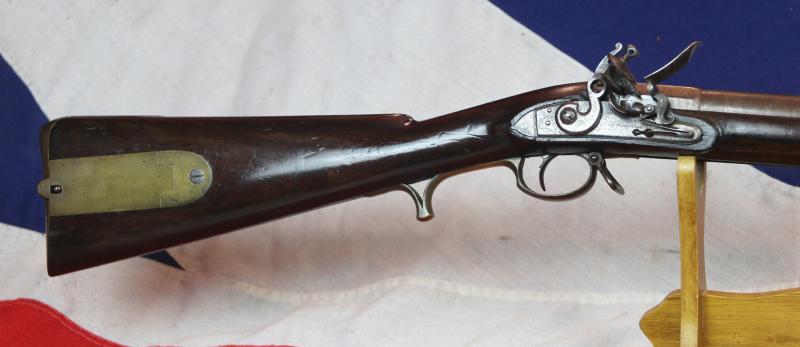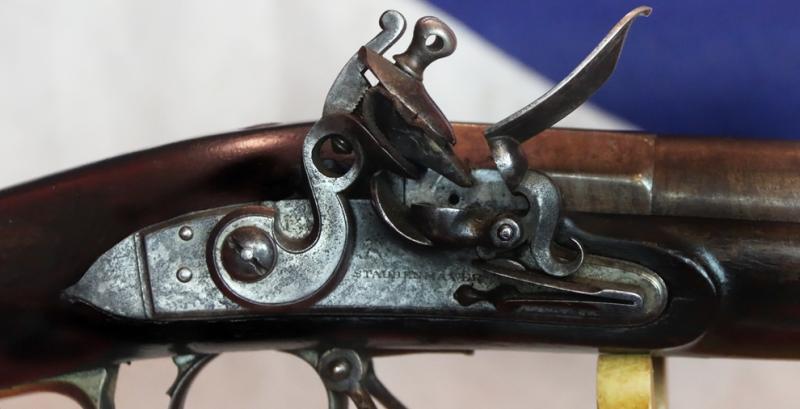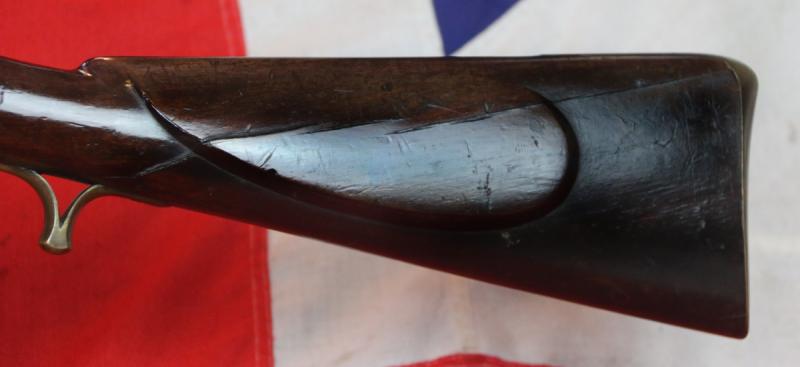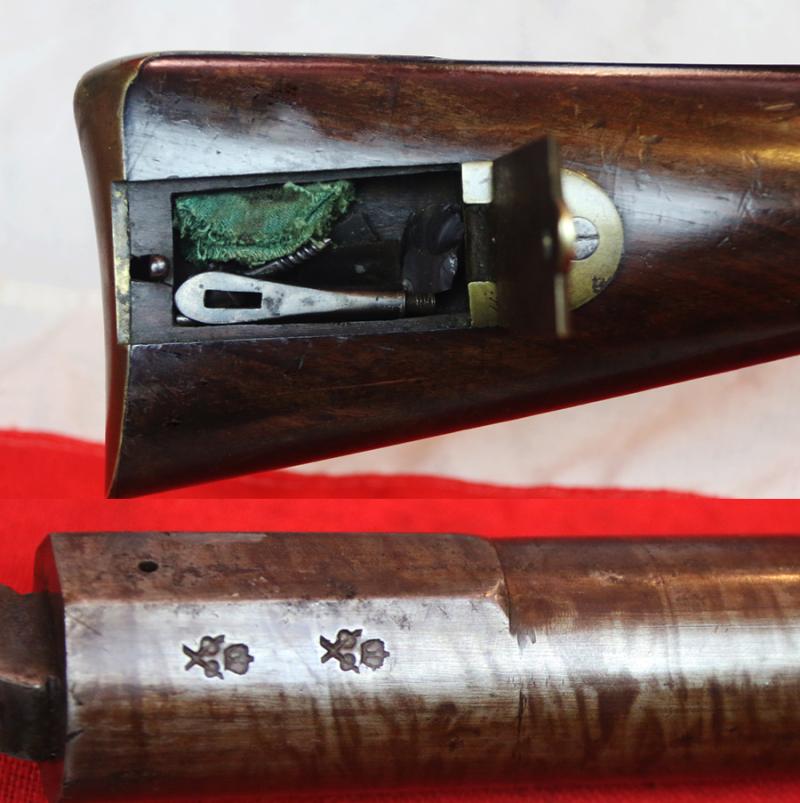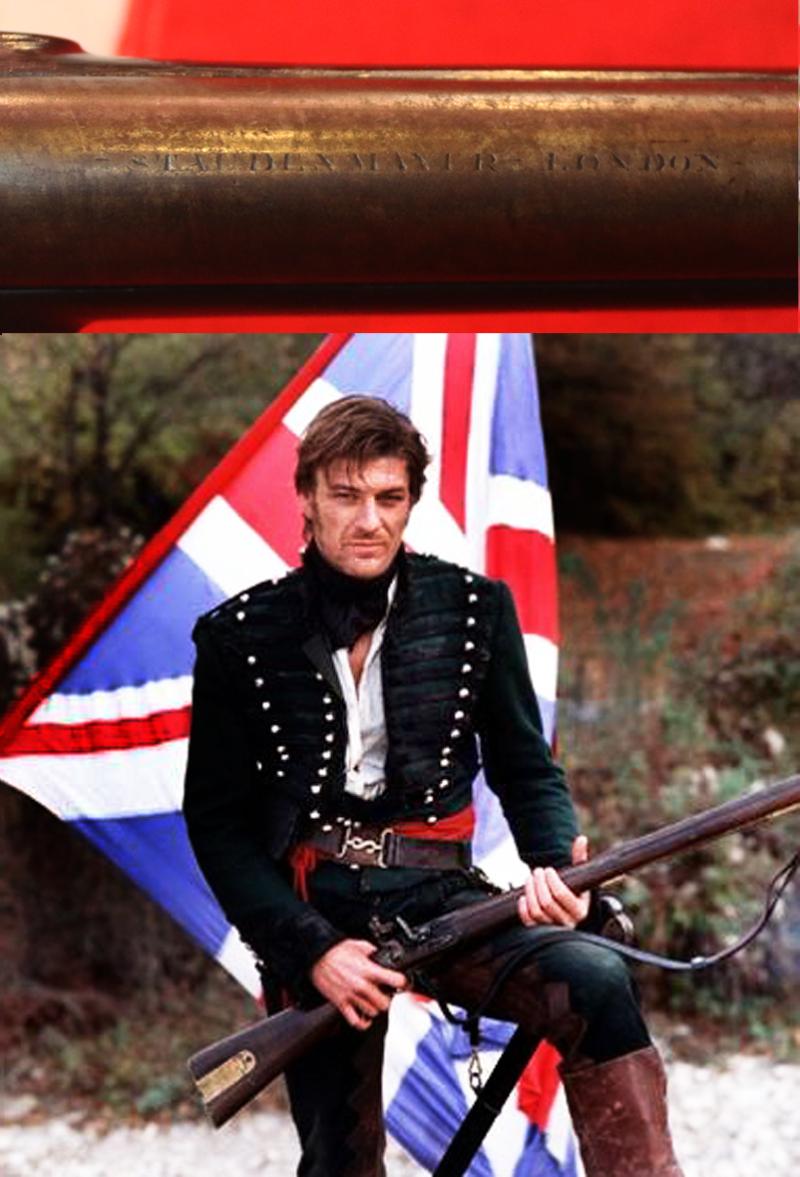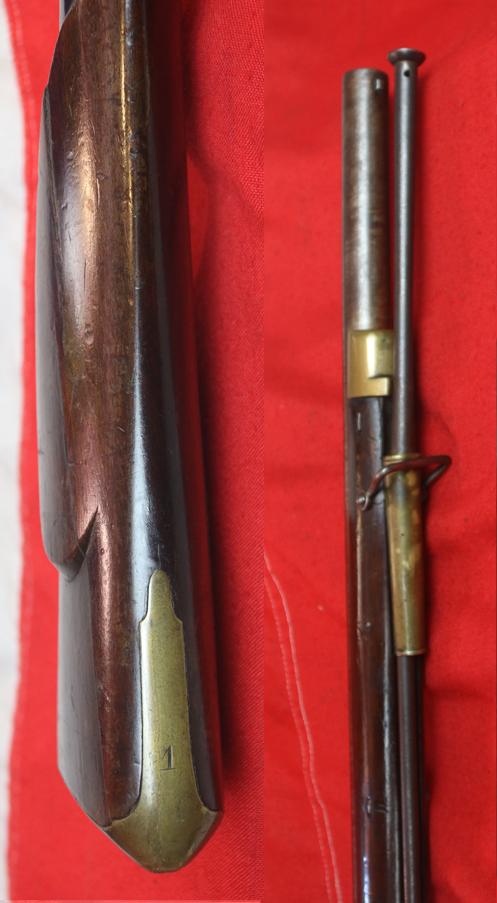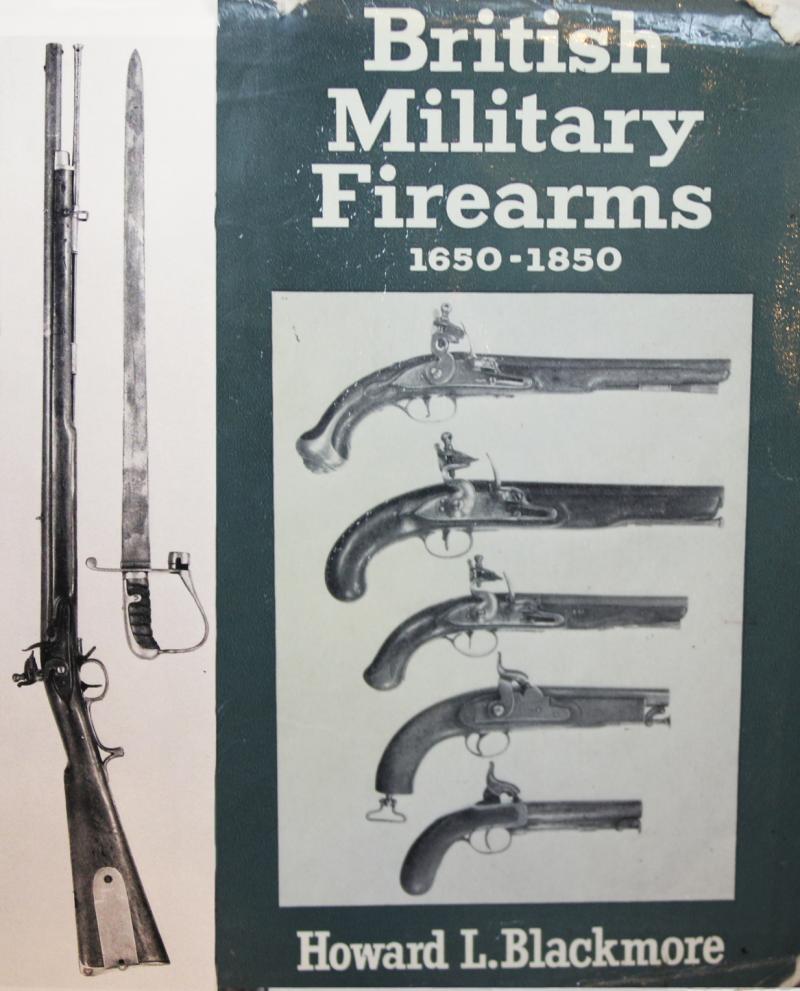A Stupendous, Original Officer's Quality Baker Rifle, of the Napoleonic Wars. Without Doubt The Most Famous Rifle Of The Georgian Period & For The Next 50 Years
Numbered on the butt tang, number 1. Coincidentally, around 25 years ago we had the privilege to own Henry Nock's No. 1 Baker as well. Both of these rifles may have been the gunsmiths examples to gain the contract from the Board of Ordnance, that eventually went to Mr Baker. When both Nock and Studenmayer failed to gain the contract, the rifles were then likely sold to British Rifle regiment officer's. However due to the exurgencies of war, Baker couldn't hope to fulfill the contract, neither could the Tower armoury, so the contracts were put out to such approved makers as Nock, Wallis and Studenmayer anyway.
It has a fine 30 inch Damascus barrel, .650, with Tower proofs, regulation seven groove rifling, and with an underside bayonet lug to affix its sword, maker inscribed name and address, of one of England's finest gunmaker's, who was gunmaker to the Prince of Wales and the Duke of York, Samuel Studenmayer of London {former apprentice to the great Manton} and he made this rifle at 35 Jermyn Street, some short while just after 1799. It is three-quarter stocked, with original steel ram/cleaning rod held within brass ramrod pipes, the tapered stepped steel lock with rain proof pan and roller frizzen. This gun appears in Howard Blackmore's British Military Firearms 1650 to 1850. It takes a very rare straight bladed socket sword {bayonet} with a 1796 pattern Light Cavalry P Hilt. {See a copy of the picture of the rifle and its sword, in a photo from Howard’s book copy that he gave us, in the gallery} It has the traditional but optional military inset patchbox in the fine walnut stock, with typical Baker cheekpiece on the opposing side, and the barrel is affixed with key slides as opposed to musket pins.
This rifle is in pretty much in the same order of condition that of all the racked Baker's showed to us by Howard Blackmore during our tour of the Tower in the 1970's, with our late gunsmith Dennis Ottrey.
Howard also showed us the original Studenmeyer Baker combat service rifle sword {bayonet} with its 1796 cavalry variant hilt with socket ring, that would have been used with our Baker rifle. We do believe that may have been the last time we saw one of these incredibly rare and collectable swords, so rare in fact, we know of no known example being available on the open market for sale these past 40 years. If one did appear, it could likely be more highly priced than the rifle itself.
The Baker rifle (officially known as the Pattern 1800 Infantry Rifle) was a flintlock rifle used by the rifle regiments of the British Army during the Napoleonic Wars. It was the first standard-issue, British-made rifle accepted by the British armed forces.
The Baker rifle was first produced in 1800 by Ezekiel Baker, a master gunsmith from Whitechapel. The British Army was still issuing the infantry rifle in the 1830s.
The British Army had learnt the value of rifles from their experience in the American Revolutionary War. However, existing rifle designs were considered too cumbersome, slow-firing, fragile or expensive to be put to use on any scale beyond irregular companies. Rifles had been issued on a limited basis and consisted of parts made to no precise pattern, often brought in from Prussia. The war against Revolutionary France resulted in the employment of new tactics, and the British Army responded, albeit with some delay. Prior to the formation of an Experimental Rifle Corps in 1800, a trial was held at Woolwich by the British Board of Ordnance on 22 February 1800 in order to select a standard rifle pattern; the rifle designed by Ezekiel Baker was chosen. During the trial, of the twelve shots fired, eleven were placed in a 6-foot (1.8 m) circular target at a distance of 300 yards (270 m).
Colonel Coote Manningham, responsible for establishing the Rifle Corps, influenced the initial designs of the Baker. The first model resembled the British infantry musket ("Brown Bess"), but was rejected as too heavy. Baker was provided with a German Jäger rifle as an example of what was needed. The second model he made had a .75 caliber bore, the same caliber as the infantry musket. It had a 32-inch barrel, with eight rectangular rifling grooves; this model was accepted as the Infantry Rifle, but more changes were made until it was finally placed into production. The third and final model had the barrel shortened from 32 to 30 inches, and the caliber reduced to .653, which allowed the rifle to fire a .625 calibre carbine bullet, with a greased patch to grip the now-seven rectangular grooves in the barrel.
The rifle is referred to almost exclusively as the "Baker Rifle", but it was produced by a variety of manufacturers and sub-contractors from 1800 to 1837. Most of the rifles produced between 1800 and 1815 were not made by Ezekiel Baker, but under the Tower of London system, and he sub-contracted the manufacture of parts of the rifle to over 20 British gunsmiths.
The rifle as originally manufactured was expected to be capable of firing at a range of up to 200 yards (183 meters) with a high hit rate. The Baker rifle was used by skirmishers facing their opponents in pairs, sniping at the enemy either from positions in front of the main lines or from hidden positions in heights overlooking battlefields.
The accuracy of the rifle in capable hands is most famously demonstrated at the Battle of Cacabelos (during Moore's retreat to Corunna in 1809) by the action of Rifleman Thomas Plunkett (or Plunket) of the 1st Battalion, 95th Rifles, who shot French General Colbert at an unknown but long range (as much as 600 yards (550 m) according to some sources). He then shot Colbert's aide-de-camp, Latour-Maubourg, who went to the aid of his general, suggesting that the success of the first shot was not due to luck.
That rifleman Plunkett and others were able to regularly hit targets at ranges considered to be beyond the rifle's effective range speaks for both their marksmanship and the capabilities of the rifle.
Overall in excellent original condition for age, with good stock patina, reverse side age stock split and just commensurate surface bruising as to be expected for its age and use. A Napoleonic Wars combat service use Stedenmayer officer’s Baker is a very highly prized rifle indeed, and this is an exceptional example as well. It’s patch box contains small useful accessories, including spare flints and cleaning rod attachments, rod thread detached.
Code: 24800



